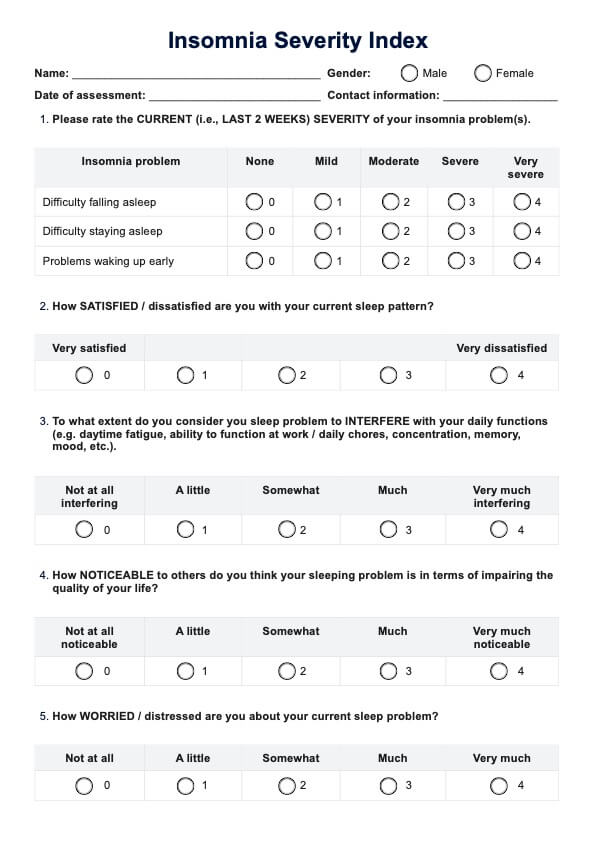The ISI is primarily designed for adults but can be adapted for adolescents under clinical guidance.

Insomnia Severity Index
Access the Insomnia Severity Index to aid in diagnosing and managing sleep issues effectively.
Use Template
Insomnia Severity Index Template
Commonly asked questions
While the ISI is valuable for assessing insomnia severity, it should not be used as a standalone diagnostic tool. Clinical judgment and additional assessments are necessary for a comprehensive diagnosis.
The ISI can be administered at regular intervals (e.g., monthly) to monitor changes in insomnia severity and evaluate treatment effectiveness.
EHR and practice management software
Get started for free
*No credit card required
Free
$0/usd
Unlimited clients
Telehealth
1GB of storage
Client portal text
Automated billing and online payments











